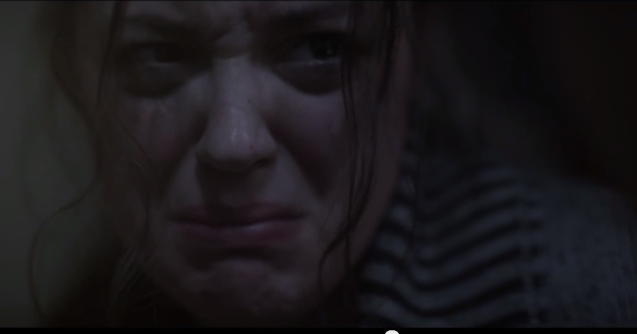High school. We all lived through the four years of rumors, insecurities from shaming, and bullying. So on March 31st, Netflix released the exclusively original American television series 13 Reasons Why, which became the most positively talked about show among teen viewers. The adaption of this show is based on the best-selling novel written by Jay Asher and created by Brian Yorkey.
The main plot of 13 Reasons Why revolves around a student who committed suicide after a series of climatic failures caused by other specific students from the school. The show follows along the journey of Clay Jensen discovering the life of Hannah Baker, who recently committed suicide, through a set of recorded cassette tapes. Each tape represents an episode unraveling Hannah Baker’s audio diary explaining her thirteen different reasons for deciding to end her life.
Overall the show depicts current social issues such as teenage insecurity, hostile school environments, and teen suicides. These representations and portrayals provide the audience with a more personal connection and insight to current teen societal issues that have become rather important and need more attention.
Overall the show depicts current social issues such as teenage insecurity, hostile school environments, and teen suicides. These representations and portrayals provide the audience with a more personal connection and insight to current teen societal issues that have become rather important and need more attention.
As a teenager in high school, teen insecurity has become a major problem. This is the time when we start comparing ourselves to others and what we see in the magazines. In high school, your reputation in the school means everything. In the first episode, “Tape 1, Side A”, a scandalous photo of the protagonist with the hottest guy in school starts a sexual rumor that triggers Hannah into an emotional downward spiral. This is a great example representing that it just takes something like a rumor to making someone feel insecure. 13 Reasons Why’s representation of teen insecurity connects teen viewers to the actors’ self-esteem issues.
It is hard to describe high school without using the typical cliché that the hostile school environment is like a jungle. Stereotypes are defined as predictable depictions that reflect and sometimes create cultural prejudices (Turow, 2014). This show breaks away from the stereotypical depiction of what high school is by revolving around the more realistic version of high school. In contrast to movies such as High School Musical or 17 Again representing the fun and memorable side of the high school environment, this series represents the more serious and problematic side of high school.
According to Neha Shah, a media critic for the Newstatesman, the show is “depicting Hannah’s suicide as a means of exposing the actions of peers and making them feel guilty”. Negative social attacks by peers causes teen insecurities and bruise emotions that every high school student has to push through. The show breaks away from the stereotypical depiction of high school and shows the more realistic side of what high school is like to connect better to viewers on an emotional level.
In the final episode of the series, “Tape 7, Side A”, the thirteenth reason for Hannah’s suicide is revealed. After admitting her struggle of being a rape victim to her school’s guidance counselor, she had received no emotional support and decides to commit suicide. With this in mind, the thirteenth reason is because of her guidance counselor not believing that she was suicidal and providing her with proper help.
This is another impactful representation of society’s lack of awareness of teen suicides and those who are aware of the signs of someone being suicidal. The series does a good job portraying to viewers that this is an important issue that needs to be addressed in society. Students should be able to go to faculty members for emotional support, especially if it involves thoughts of taking one’s life.
Overall the Netflix original series presents an intriguing, yet realistic performance of the current teen issues that should be considered as a more serious issue. The storyline of the show is a representation of what it is like to be a teenager in high school dealing with rumors, shaming, and bullying. Every episode revolves around a different reason leading to the suicide of the female protagonist. 13 Reasons Why successfully sheds light only on thirteen reason why teen suicides and teen insecurities are becoming a major issue.
It is hard to describe high school without using the typical cliché that the hostile school environment is like a jungle. Stereotypes are defined as predictable depictions that reflect and sometimes create cultural prejudices (Turow, 2014). This show breaks away from the stereotypical depiction of what high school is by revolving around the more realistic version of high school. In contrast to movies such as High School Musical or 17 Again representing the fun and memorable side of the high school environment, this series represents the more serious and problematic side of high school.
According to Neha Shah, a media critic for the Newstatesman, the show is “depicting Hannah’s suicide as a means of exposing the actions of peers and making them feel guilty”. Negative social attacks by peers causes teen insecurities and bruise emotions that every high school student has to push through. The show breaks away from the stereotypical depiction of high school and shows the more realistic side of what high school is like to connect better to viewers on an emotional level.
In the final episode of the series, “Tape 7, Side A”, the thirteenth reason for Hannah’s suicide is revealed. After admitting her struggle of being a rape victim to her school’s guidance counselor, she had received no emotional support and decides to commit suicide. With this in mind, the thirteenth reason is because of her guidance counselor not believing that she was suicidal and providing her with proper help.
This is another impactful representation of society’s lack of awareness of teen suicides and those who are aware of the signs of someone being suicidal. The series does a good job portraying to viewers that this is an important issue that needs to be addressed in society. Students should be able to go to faculty members for emotional support, especially if it involves thoughts of taking one’s life.
Overall the Netflix original series presents an intriguing, yet realistic performance of the current teen issues that should be considered as a more serious issue. The storyline of the show is a representation of what it is like to be a teenager in high school dealing with rumors, shaming, and bullying. Every episode revolves around a different reason leading to the suicide of the female protagonist. 13 Reasons Why successfully sheds light only on thirteen reason why teen suicides and teen insecurities are becoming a major issue.











